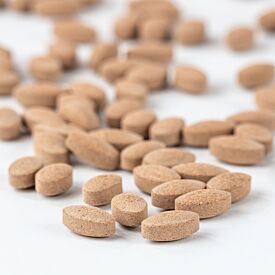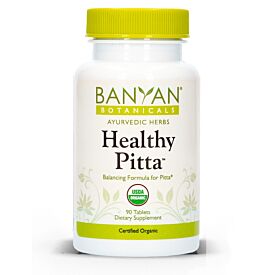Fall for Pitta

For pitta-types, fall ushers in a welcome respite from the heat—it is the natural antidote to summer. However, if you don’t take full advantage of the vata season to clear out any excess pitta you accumulated during the summer, you may find that you are quite disturbed by autumn’s dry, light, mobile, and subtle qualities.
Here are some tips on how to make a smooth and healthy transition from pitta season to vata season.
Ideal Fall Foods for Pitta
The fall harvest of apples and pears offers the perfect combination of cooling energy, astringent taste, and fiber content to clear out accumulated pitta. 1 Eat these fruits in abundance in the early fall, when they are in season. From there, you’ll want to focus on a diet that will pacify vata without triggering too much of the hot, sharp, oily, or liquid nature of pitta.
Foods that will help you strike this balance include avocados, sweet berries, coconut, dates, figs, soaked raisins, asparagus, cilantro, cucumbers, green beans, okra, parsnips, sweet potatoes, rutabagas, summer squash, zucchini, amaranth, oatmeal, quinoa, basmati rice, wheat, mung beans, tofu, soft cheeses, milk, ghee, fresh yogurt, buffalo, soaked and peeled almonds, and sunflower seeds.
You can also use cooling spices like cumin, coriander, fennel, and garnish your food with cilantro, shredded coconut, and fresh lime juice.
Acceptable Fall Indulgences
The sweet taste pacifies both vata and pitta and can be very nourishing and grounding. At this time of year, hearty autumn sweet breads (pumpkin bread, zucchini bread, etc.) would be a great choice, or you might prefer a yummy dairy-treat like rice khir (pudding), a date shake, or spiced milk (boiled milk with a pinch of cinnamon and nutmeg, some natural sugar, and a bit of ghee).
In general, you may find that your strong digestive fire allows you to eat more beans and astringent vegetables than some. An accumulation of gas, bloating, or a sense of dryness would be an indication that you may be overdoing these foods.
Foods to Minimize
In general, you’ll want to be mindful not to overdose on heating foods. Even though vata season is cool, your internal heat is naturally quite high. Red meat, for example (aside from buffalo), can be very heating and may prove a bit much for you.
You’ll also want to watch your use of really heating spices (like cayenne and dried ginger) and limit your exposure to foods that are aggravating to both vata and pitta like cranberries, burdock root, corn, eggplant, kohlrabi, raw onions, radishes, turnips, millet, and rye.
If your pitta is relatively balanced and you’re eating seasonally appropriate foods, just learn to watch for subtle signs of increased heat and minimize any foods that seem to cause acidity, diarrhea, a rash, or a sour taste in your mouth.
Lifestyle Adjustments
Pitta-types can be aggravated by the light, mobile qualities of autumn so focusing on grounding, routine, and stability can be very helpful. You may also have to modify some of your seasonal practices to ensure that they are not too heating.
Regular steam baths, for example, would probably be too much for you. Even sesame oil massage can irritate or dry out pitta-type skin. If you find this to be the case, cut the sesame oil by half with coconut oil, or switch entirely to coconut oil or Pitta Massage Oil.
Exercise when it is cool outside and adopt a pitta-pacifying level of intensity (tone down your ambition, and try not to finish your workout flushed and panting). In your yoga practice, don’t allow yourself to get too hot, be careful with inversions, and focus on a grounded, relaxed effort throughout your practice.
In general, try to soften pitta’s sharp intensity and focus with grounded relaxation this fall.








